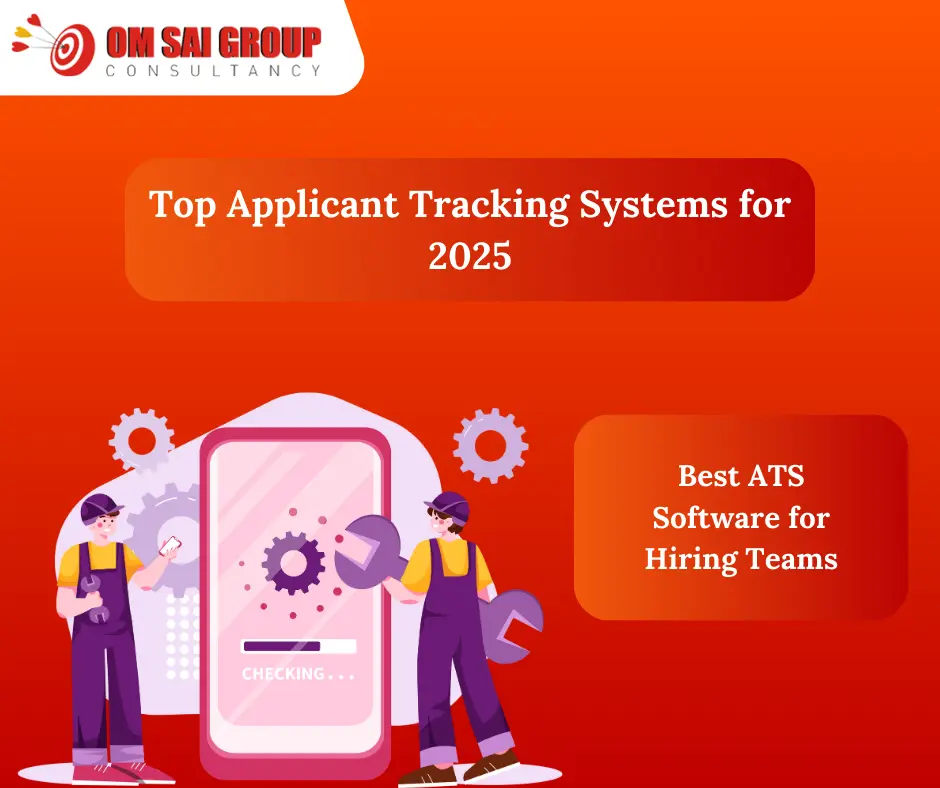
Navigating the Modern Hiring Landscape with Precision
Recruitment in the present day is a war. Applicant tracking systems Not due to a lack of talent—but due to the fact that recruiting the right candidate is more challenging than ever before. The digital recruitment ecosystem is filled with resumes, and within this ocean of qualifications, HR professionals tend to spend most of their time dealing with inefficiencies, redundant work, and inconsistent assessments. Welcome the applicant tracking system—a game-changing tool transforming the way businesses find, assess, and engage talent. Placement Service
But what can application tracking system software actually do? For those who don’t know, it’s not just a computer résumé sorter. It’s a highly capable, AI-infused structure that streamlines the entire hiring process, from posting a job to bringing new talent on board. In an agile-driven, accuracy-focused business landscape, the applicant tracking system model of recruitment is no longer a luxury—it’s a necessity. Applicant tracking systems
The Struggle Before the System
Hiring was once linear, even manual. Recruiters advertised openings on job boards, held their breaths, and sorted through piles of résumés manually. The catch? Quantity. As openings increased, so did applications. Human judgment just couldn’t keep up. Mis-hires skyrocketed, and recruitment timelines extended weeks—if not months. Applicant tracking systems
Next was the transition. The application tracking system for recruitment evolved to give form, effectiveness, and flexibility to the recruitment process. But for most organizations, comprehension and application of such systems continue to seem daunting. That is where this guide is helpful. Applicant tracking systems
Why an Applicant Tracking System Matters in 2025 and Beyond

The modern recruitment process is multi-dimensional. You’re not just seeking qualifications—you’re analyzing cultural fit, potential, and adaptability. A reliable application tracking system recruitment platform serves as your digital assistant, automating repetitive tasks and offering actionable insights. Applicant tracking systems
Here’s what the stakes look like:
- 94% of recruiters say their ATS has improved their hiring process.
- 78% of large organizations already use an applicant tracking system.
- Companies using an ATS reduce time-to-hire by 30-50%.
The statistics say it all. Efficiency. Consistency. Compliance. These are no longer luxuries–they’re strategic imperatives.
Breaking Down the Process — A Step-by-Step Overview
Step 1: Define Your Hiring Needs Clearly
Prior to any tool being able to function, you must have clarity. Applicant tracking systems Define the job role, the responsibilities, the required qualifications, and the desired experience levels. The applicant tracking system hiring process starts with solid data input. Undefined roles result in subpar candidate fits even when utilizing top-of-the-line software.
Step 2: Set Up the ATS with Job Details
After the job profile has been defined, enter the details into the hiring application tracking system. Most systems enable:
- Automated job postings to multiple sites.
- Pre-set screening questions.
- Keyword optimization to enhance visibility.
Accuracy here ensures the rest of the pipeline runs smoothly.
Step 3: Resume Parsing and Shortlisting
This is where the magic begins. The applicant tracking system applies algorithms to scan for keywords, levels of experience, and credentials. It ranks them by relevance. No more hours spent reading CVs by hand. Rather, the system delivers a prioritized shortlist for review.
Step 4: Structured Candidate Evaluation
Most ATS platforms include assessment tools or enable customized evaluation templates. Structured evaluations translate to:
- Less bias.
- More consistency.
- Improved hiring decisions.
The ATS hiring engine doesn’t merely save information—it translates it, providing dashboards and summaries to facilitate rapid, data-driven decisions. Applicant tracking systems
Step 5: Streamlined Communication
One of the most common pain areas in recruitment is candidate interaction. The ATS automates:
- Interview scheduling.
- Follow-up emails.
- Status updates.
This not only enhances candidate experience but also the employer reputation. It keeps top talent interested—vital in competitive markets.
Step 6: Feedback and Collaboration
Collaboration flows more smoothly when all of us work on the same system. Hiring managers, HR, and team leads can record notes, exchange feedback, and approve candidates within the same applicant tracking system. This minimizes miscommunication and speeds up decision-making. Applicant tracking systems
Step 7: Compliance and Reporting
Compliance regulation is usually an afterthought but critical. The ATS maintains thorough logs, providing audit trails and native reports. Whether for internal audits or legal requirements, these features ensure organizations have transparency. Staffing solutions

Features to Look For in a Recruitment Application Tracking System
It’s all about choosing the right system. The following are a must-have features for an efficient applicant tracking system recruitment configuration:
- Customizable Workflows: Adapt stages of hiring to your specific process.
- AI Resume Matching: Smart matching to limit human error.
- Automated Interview Scheduling: Time zone and calendar integration.
- Reporting and Analytics: Metrics that matter—cost-per-hire, time-to-hire, and candidate sources.
- Integration Capabilities: Integration with existing HR systems or CRMs.
Selecting a platform lacking these capabilities is like purchasing a vehicle without an engine—it may be sleek, but it will not take you far. Applicant tracking systems
Common Misconceptions About Applicant Tracking Systems
In spite of their increasing popularity, myths still abound:
- “It’s only for big companies.”
False. Scalable solutions for startups and small- to mid. sized firms are available too.
- “It removes the human element.”
Incorrect. It increases human decision-making by eliminating noise. manpower Service
- “It’s expensive.”
Old-school thinking. ROI from decreased hiring time and increased quality easily pays back initial investment.
Building the Business Case for an ATS
Not yet convinced? Take a look at these business benefits:
- Decreased hiring costs through automated administrative tasks.
- Increased candidate quality through AI-based filtering.
- Improved decision-making through structured feedback.
- Enhanced employer branding with smooth candidate communication.
When leadership views recruitment as a growth enabler instead of a back-office function, change sets in. Investing in a recruitment application tracking system reflects maturity, vision, and effectiveness.
Real-World Case Example
A Bangalore-based mid-size technology company was grappling with manual recruitment and, as a result, had an average 60-day hiring cycle. Once they implemented a cloud-based application tracking system recruitment platform, that time was reduced by 40%. Recruitment teams are spending lesser time filtering and more time interviewing best-in-class candidates. Applicant tracking systems The hire quality increased, and the process of onboarding became easier and quicker.
This is not the exception—it’s the rule when strategic use of digital recruitment technology.
Action Starts Now — Digitize to Optimize
Talent war requires new tools. If your company is relying on old hiring methods, you’re already behind the curve. Adopting the applicant tracking system is step one in making your recruitment operations future-proof.
Speed, structure, and success are in sight. The system doesn’t take the place of your team—it enables them. So, chart your recruitment journey, choose the right tools, and take your hiring to the next level. Applicant tracking systems
The future of recruitment is smart, connected, and insight-based. And it begins with one choice: to advance. recruitment Agencies
